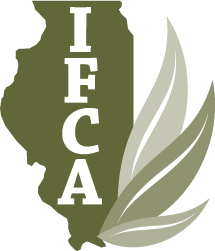Corn Insecticide Seed Treatment And Foliar Fungicide Effects On Corn Response To Fertilizer Nitrogen
The current nitrogen use efficiency numbers for corn in Illinois ranges from 0.8 to 1.2 lb N/bu based on yield goal, previous crop, manure credits and other incidentals. Recent studies have enhanced the process of identifying optimum N needs based on N prices and value of corn (Nafziger et al, 2005). As N prices continue to escalate, further fine tuning of the nitrogen rate equation will be needed.
Changes in yield potential associated with technological advances such as insecticide seed treatments (IST) and foliar fungicides should increase the need for additional fertilizer N. However, there are increased efficiencies of N use expected as plant roots are protected from insect damage. Improving photosynthetic capacities may extend and enhance grain filling but would also be effective in prolonging root efficacy to take up soil nutrients, including N.
As N prices continue to climb, reduction in N rates associated with increased N use efficiency becomes more of an economical consideration. These gains in efficiency could be combined with potential increases in yield to more than offset the costs of IST and/or foliar fungicide treatments.
The objectives of this study are to 1) evaluate the effects of corn insecticide seed treatment (IST) on plant stand, yield and fertilizer N response of corn, 2) determine the interactions of foliar fungicide, IST, and N rates on corn health, diseases, and grain yields, and 3) determine the economics of the use of IST and foliar fungicides in corn production in southern IL
Changes in yield potential associated with technological advances such as insecticide seed treatments (IST) and foliar fungicides should increase the need for additional fertilizer N. However, there are increased efficiencies of N use expected as plant roots are protected from insect damage. Improving photosynthetic capacities may extend and enhance grain filling but would also be effective in prolonging root efficacy to take up soil nutrients, including N.
As N prices continue to climb, reduction in N rates associated with increased N use efficiency becomes more of an economical consideration. These gains in efficiency could be combined with potential increases in yield to more than offset the costs of IST and/or foliar fungicide treatments.
The objectives of this study are to 1) evaluate the effects of corn insecticide seed treatment (IST) on plant stand, yield and fertilizer N response of corn, 2) determine the interactions of foliar fungicide, IST, and N rates on corn health, diseases, and grain yields, and 3) determine the economics of the use of IST and foliar fungicides in corn production in southern IL
